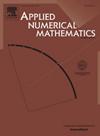复杂网络的稀疏逼近
IF 2.2
2区 数学
Q1 MATHEMATICS, APPLIED
引用次数: 0
摘要
本文考虑的问题是从可通信矩阵 C=exp(Atrue)+N∈Rn×n 的损坏版本中恢复网络未知(精确)邻接矩阵 Atrue 的稀疏近似值 A∈Rn×n,其中 N 表示未知 "噪声矩阵"。我们考虑了两种确定 Atrue 近似值 A 的方法:(i) 带软阈值和直线搜索的牛顿法,以及 (ii) 带直线搜索的近似梯度法。这些方法用于计算最小化问题argminA∈Rn×n{‖exp(A)-C‖F2+μ‖vec(A)‖1}的解,其中μ>0 是控制收缩量的正则化参数。我们讨论了 μ 对计算解的影响、收敛条件以及方法的收敛速度。计算实例说明了这些方法应用于有向和无向网络时的性能。本文章由计算机程序翻译,如有差异,请以英文原文为准。
Sparse approximation of complex networks
This paper considers the problem of recovering a sparse approximation of an unknown (exact) adjacency matrix for a network from a corrupted version of a communicability matrix , where N denotes an unknown “noise matrix”. We consider two methods for determining an approximation A of : a Newton method with soft-thresholding and line search, and a proximal gradient method with line search. These methods are applied to compute the solution of the minimization problem where is a regularization parameter that controls the amount of shrinkage. We discuss the effect of μ on the computed solution, conditions for convergence, and the rate of convergence of the methods. Computed examples illustrate their performance when applied to directed and undirected networks.
求助全文
通过发布文献求助,成功后即可免费获取论文全文。
去求助
来源期刊

Applied Numerical Mathematics
数学-应用数学
CiteScore
5.60
自引率
7.10%
发文量
225
审稿时长
7.2 months
期刊介绍:
The purpose of the journal is to provide a forum for the publication of high quality research and tutorial papers in computational mathematics. In addition to the traditional issues and problems in numerical analysis, the journal also publishes papers describing relevant applications in such fields as physics, fluid dynamics, engineering and other branches of applied science with a computational mathematics component. The journal strives to be flexible in the type of papers it publishes and their format. Equally desirable are:
(i) Full papers, which should be complete and relatively self-contained original contributions with an introduction that can be understood by the broad computational mathematics community. Both rigorous and heuristic styles are acceptable. Of particular interest are papers about new areas of research, in which other than strictly mathematical arguments may be important in establishing a basis for further developments.
(ii) Tutorial review papers, covering some of the important issues in Numerical Mathematics, Scientific Computing and their Applications. The journal will occasionally publish contributions which are larger than the usual format for regular papers.
(iii) Short notes, which present specific new results and techniques in a brief communication.
 求助内容:
求助内容: 应助结果提醒方式:
应助结果提醒方式:


